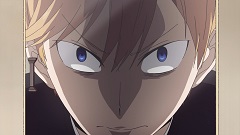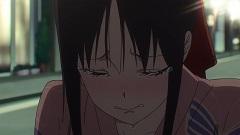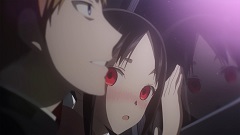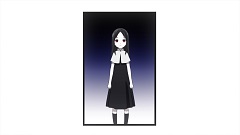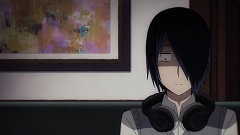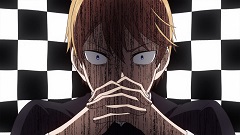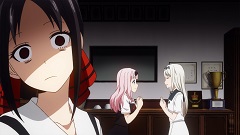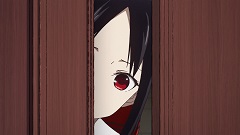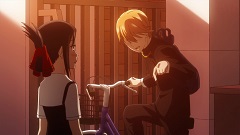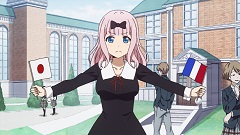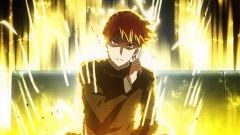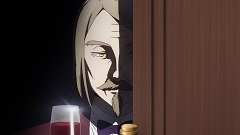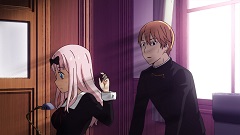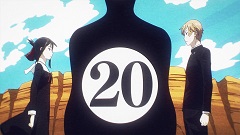And so we reach the end of Kaguya-sama’s twelve episode run. There’s no word of a second season yet, but given the original’s enthusiastic reception, I have to imagine that one will come. (We ought to get an OVA at the very least – otaku have come to expect them when shelling out for pricey Blu-ray boxes.) A sequel may be even more likely when we consider the strength of the first series’ conclusion, and this one definitely ended on a good note, following up on both the emotional promise and the more light-hearted elements of the previous episode. Kaguya’s newly created Twitter account and the Metropolitan Ramen Kings both played a role in her jailbreak, just as sickly Kaguya’s fixation on fireworks pointed to a deeper, more personal issue. The show’s reuse of seemingly minor elements is a big bonus for me, since it adds to the feeling that everything on screen has been put there for a purpose. Even when I didn’t care for them at first, the payoff was typically somewhere around the corner. Kaguya-sama’s standalone chapters were some of my favorites in this one cour run, but a little bit of continuity goes a long way in authenticating the show’s world.
The bulk of this final episode was dedicated to “I Can’t Hear the Fireworks,” putting a cap on the post-credits scene from episode 11. Of all the things to love about this two-parter, my favorite is the contrast between the reasons for Kaguya’s lack of hearing. In the past, she was forbidden from attending festivals or fireworks displays, so she could only watch from her bedroom window as they burst into view without sound. She sees the fireworks through a window in the present, as well, but this time she’s together with her friends and her first love, and it’s the furious beating of her heart that drowns out all other noise. These different contexts give the chapter a poetic flavor, as we witness how universal things like friendship and romance can prove so impactful in one girl’s life.
Kaguya might have stayed confined to her room and missed making a valuable memory if not for Hayasaka’s encouragement and the help of the student council members (including Fujiwara, who opted to skip her Spain trip in favor of attending the festival with her friend). In fact, she was originally so heartbroken that she wished she’d never gotten close to them, so it wouldn’t hurt quite as much when she was forbidden from seeing them. The series depicted that pain through multiple shots of Kaguya’s tear-stained face, as well as more experimental live action cuts of black windblown strands (representing the veil of hair with which she protects her eyes). When these sorrowful images eventually gave way to anticipation and wonder, there was a feeling of catharsis that most anime series couldn’t hope to match.
Of course, Kaguya-sama wouldn’t be a romcom without an eventual return to the status quo, and one last contest in the council room serves as the series’ parting note. It’s a chapter that focuses on spring cleaning, to boot, as if to polish and dust the show of excess sentimentality. Nevertheless, there’s a sense that Kaguya herself has changed a bit. Although Shirogane is preoccupied by the scale of his actions on that festival night, his crush is desperate to say “thank you” for those same efforts. Try she does, but even after ejecting Ishigami and Fujiwara from the room, she’s still foiled by a misunderstanding that causes the president to flee the scene in embarrassment. It’s worth noting that she chases after him, though, a gutsy impulse that she never could have acted on a year ago. Shirogane is still terribly self-conscious, and Kaguya is still learning how to process her new feelings, so their continued separation makes sense. But at least they’re headed in the same direction, with good friends to support them on their journey, and plenty of time before high school ends to grow closer together.

